
Baguio, officially the City of Baguio, is a 1st class highly urbanized city in the Cordillera Administrative Region, Philippines. It is known as the "Summer Capital of the Philippines", owing to its cool climate since the city is located approximately 4,810 feet above mean sea level, often cited as 1,540 meters in the Luzon tropical pine forests ecoregion, which also makes it conducive for the growth of mossy plants, orchids and pine trees, to which it attributes its other moniker as the "City of Pines".

The University of the Philippines Manila is a public, coeducational, research university located in Ermita, Manila, Philippines. It is known for being the country's center of excellence in the health sciences, including health professional education, training, and research. It is the oldest of eight constituent universities of the University of the Philippines System, and predates the founding of UP by three years. It was originally established on December 1, 1905, as the Philippine Medical School and later renamed as the UP College of Medicine and Surgery on June 10, 1907. In 1983 it was renamed as University of the Philippines Manila.

Dagupan, officially the City of Dagupan, is a 1st class independent component city in the Ilocos Region, Philippines. According to the 2020 census, it has a population of 174,302 people.

Brooke Army Medical Center (BAMC) is the United States Army's premier medical institution. Located on Fort Sam Houston, BAMC, a 425-bed Academic Medical Center, is the Department of Defense's largest facility and only Level 1 Trauma Center. BAMC is also home to the Center for the Intrepid, an outpatient rehabilitation facility. The center is composed of ten separate organizations, including community medical clinics, centered around the Army's largest in-patient hospital. BAMC is staffed by more than 8,000 Soldiers, Airmen, Sailors, Civilians, and Contractors providing care to wounded Service Members and the San Antonio Community at-large.
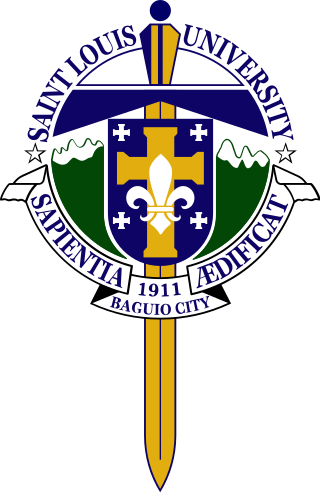
Saint Louis University also referred to by its acronym SLU, is a private Catholic research basic and higher education institution run by the Congregation of the Immaculate Heart of Mary in Baguio, Philippines. It was founded on December 1, 1911, by the CICM Missionaries.

The 1990 Luzon earthquake occurred on July 16 at 4:26 p.m. (PDT) or 3:26 p.m. (PST) on the densely populated island of Luzon in the Philippines. The shock had a surface wave magnitude of 7.8 and produced a 125 km-long ground rupture that stretched from Dingalan, Aurora to Kayapa, Nueva Vizcaya. The event was a result of strike-slip movements along the Philippine Fault and the Digdig Fault within the Philippine Fault System. The earthquake's epicenter was near the town of Rizal, Nueva Ecija, northeast of Cabanatuan. An estimated 1,621 people were killed, most of the fatalities located in Central Luzon and the Cordillera region.

The Jose B. Lingad Memorial General Hospital is located in San Fernando, Pampanga, Philippines. It is a Level III tertiary, training and teaching hospital with 250 authorized beds as mandated by Republic Act (R.A.) 6780 enacted in 1990. The hospital caters to the people of Region III, with the people of Pampanga as its primary catchment area and the nearby provinces of Bataan, Nueva Ecija, Bulacan, Tarlac, Zambales and Aurora as its secondary catchment areas.

The Dr. Jose N. Rodriguez Memorial Hospital (DJNRMH), formerly known as Central Luzon Sanitarium, was established in 1940, to accommodate patients with Hansen's Disease in the entire Luzon region in the Philippines. It is currently situated within the district of Tala, in Caloocan, Metro Manila, and occupies 130 hectares of land area, from the original 808 hectares. The reduction of land area was to accommodate previous homeless treated patients who eventually settled and established their own community, called Tala.
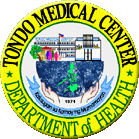
The Tondo Medical Center, also known as Tondo Med, is a 300-bed capacity tertiary public medical center established in 1971, under the supervision and control of the Department of Health (DOH). It is located on North Bay Boulevard, Tondo, Manila, Philippines. Tondo Med has eight hospital departments, all of which are currently accredited with their respective specialty societies except for EENT and Radiology which are still in the process of accreditation with the DOH.

The first secondary school in Baguio, Philippines was the normal school in 1916 later called Baguio Trade School. Classes were held where Home Sweet Home now stands as this area and the present University of the Philippines Baguio location was included in the reserved land for the Bureau of Education by Forbes. In 1919 it became Mountain Province High School. Classes were held at Teacher’s Camp and native girls from all over the province were housed at Bua Dormitory known today as Pacdal Elementary School. Among the pioneer teachers were Juan Balagot, Servillano Tumaneng, Pedro Balagot, Genoveva Llamas, Esperanza Ver, Donato Guerzon, Julia Guerzon, Grace H. Miller, Petra Ramirez, and Pilar Tan and Jess L. Gains who was also the principal.

Vicente Sotto Memorial Medical Center (VSMMC) is a government-owned hospital in Cebu City, Philippines.

The Southern Philippines Medical Center (SPMC) is a government hospital under the Department of Health of the Republic of the Philippines. It is located at the JP Laurel Ave, Bajada, Davao City. It began as the Davao Medical Center. Its name was changed on November 19, 2009, by Republic Act 9792.
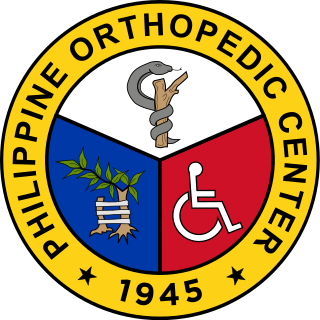
The Philippine Orthopedic Center is a 700-bed tertiary special hospital under the Department of Health of the Philippines, specializing in the treatment of musculoskeletal disorders and serves as a center for trauma and orthopedics. The hospital is located at Banawe Avenue corner Maria Clara Street, Santa Mesa Heights, Quezon City.

The Eastern Visayas Medical Center (EVMC) is a tertiary level teaching and training government hospital in the Philippines.

The East Avenue Medical Center (EAMC) is a government-owned tertiary general hospital located in Central, Quezon City, Philippines.

Marquez "Mark" Ocampo Go is a Filipino businessman and politician. A member of the Nacionalista Party, he is the incumbent representative of the legislative district of Baguio since 2016. He is also an outstanding citizen of Baguio awardee in 1998.
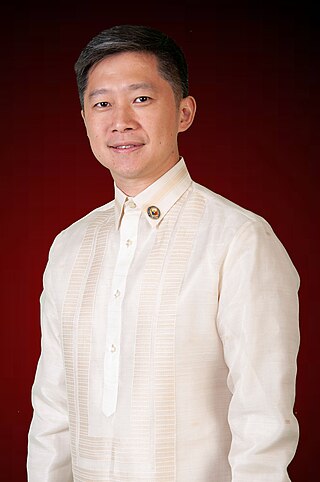
Eric Go Yap is a Filipino politician serving as the Representative for Benguet's lone congressional district since 2022, and was the district's legislative caretaker from January 2020 until he was elected in his own right. He was a party-list representative for ACT-CIS from 2019 to 2022, and is the chairman of the House Committee on Appropriations since March 2020.
The COVID-19 pandemic in the Cordillera Administrative Region is part of the worldwide pandemic of coronavirus disease 2019 caused by severe acute respiratory syndrome coronavirus 2. The virus reached the Cordillera Administrative Region on March 20, 2020, when the first case of the disease was confirmed to involve a resident of Manabo, Abra. All provinces, as well as the independent city of Baguio has recorded at least one confirmed COVID-19 case.

The Northern Mindanao Medical Center (NMMC) is a government hospital in Cagayan de Oro, Philippines. It is managed under the Department of Health.
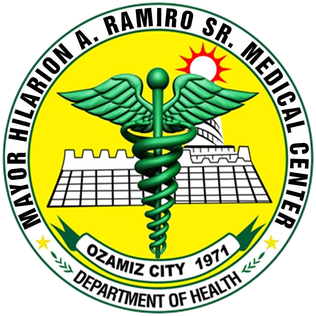
The Mayor Hilarion A. Ramiro Sr. Medical Center (MHARS-MC) is a tertiary government hospital in Ozamiz, Misamis Occidental, Philippines. It is managed under the Department of Health.




















